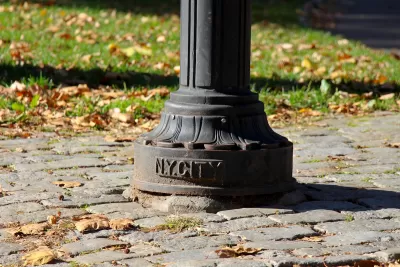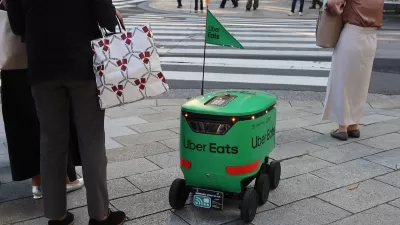The original tile and brick sidewalks now pose safety hazards and don’t fully serve modern accessibility and mobility needs.

A project to repair 108 blocks of sidewalks around New York City’s Central Park will make them more accessible to people using wheelchairs, strollers, and other mobility devices.
As Anna Kodé explains the The New York Times, the granite blocks and asphalt tiles in the century-and-a-half year old sidewalks now pose safety and accessibility hazards. “When the paved sidewalks were originally being installed in the 1930s, over 70 years after the first section of the park opened to the public, there were no electric scooters, Citi Bikes or people getting in and out of Ubers. Natural impediments have cropped up, too: Overgrown tree roots push up sections of the sidewalk, and pools of storm water collect in its dips.”
Now, the Central Park Conservancy is undertaking a massive restoration project that aims to balance preservation with accessibility. The group plans to restore some of the original design patterns while enhancing accessibility and safety, as well as preserving the park's elm trees, one of the largest stands remaining in the country. “The park’s prized American elm trees are a large part of why the restoration will take years to complete. The conservancy planted 58 new trees around the perimeter and is taking care to disturb the existing roots as little as possible as it installs the new sidewalk blocks and benches.”
FULL STORY: Fixing Central Park’s Bumpy Sidewalks

Maui's Vacation Rental Debate Turns Ugly
Verbal attacks, misinformation campaigns and fistfights plague a high-stakes debate to convert thousands of vacation rentals into long-term housing.

Planetizen Federal Action Tracker
A weekly monitor of how Trump’s orders and actions are impacting planners and planning in America.

In Urban Planning, AI Prompting Could be the New Design Thinking
Creativity has long been key to great urban design. What if we see AI as our new creative partner?

King County Supportive Housing Program Offers Hope for Unhoused Residents
The county is taking a ‘Housing First’ approach that prioritizes getting people into housing, then offering wraparound supportive services.

Researchers Use AI to Get Clearer Picture of US Housing
Analysts are using artificial intelligence to supercharge their research by allowing them to comb through data faster. Though these AI tools can be error prone, they save time and housing researchers are optimistic about the future.

Making Shared Micromobility More Inclusive
Cities and shared mobility system operators can do more to include people with disabilities in planning and operations, per a new report.
Urban Design for Planners 1: Software Tools
This six-course series explores essential urban design concepts using open source software and equips planners with the tools they need to participate fully in the urban design process.
Planning for Universal Design
Learn the tools for implementing Universal Design in planning regulations.
planning NEXT
Appalachian Highlands Housing Partners
Gallatin County Department of Planning & Community Development
Mpact (founded as Rail~Volution)
City of Camden Redevelopment Agency
City of Astoria
City of Portland
City of Laramie





























